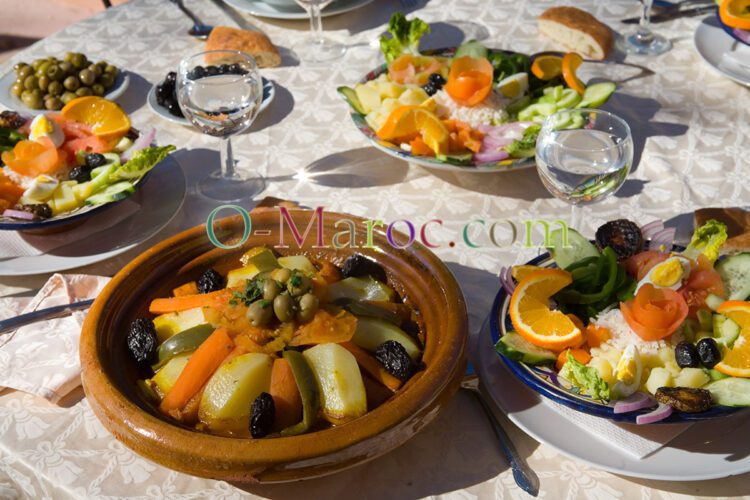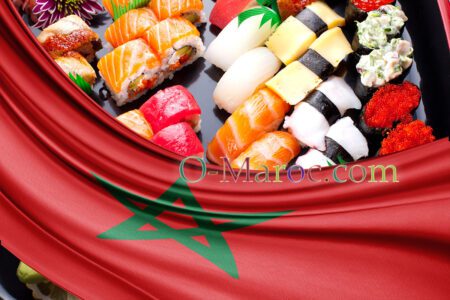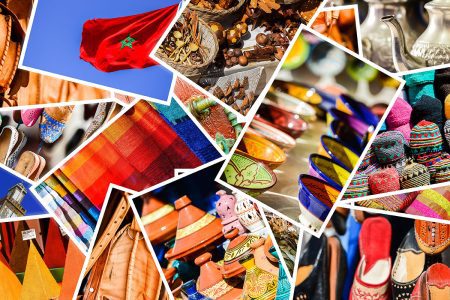I love cooking, and my culinary life in Morocco has gone through several phases. I began with the classic discovery and amazement of this delicious cuisine. After a few years, life in the South and the difficulty of finding ingredients for a more varied cuisine began to weigh on me.
As I gradually moved towards the capital, I found more variety, especially as Morocco became more open to international influences and imports. It’s still difficult to cook Russian cuisine (part of my roots) or to find anything that makes a decent tarama. On another site, Cook on the ways, I share my non-Moroccan culinary adventures in Morocco!
So what can you expect from a visit to Morocco, or a longer-term stay?
Discover Morocco through its gastronomy
Moroccan cuisine is renowned for being one of the best, perhaps the North African equivalent of French cuisine. And for Moroccans, of course, it’s even better!
There are many specialities, from north to south, and the use of spices requires an expert hand, so that the tastes blend together without one taking precedence over the other. Many dishes mix sweet and savoury. Delhi belly, that plague of the travelling tourist, can be triggered by a simple change of climate, or even habits…. You can also catch it in European countries!

Food in Morocco is of good quality, and Moroccans themselves are very particular about the freshness and quality of their produce. What is natural, “beldi”, is highly prized, sometimes wrongly so because beldi does not mean organic.
The usual precautions (no unpeeled fruit or vegetables, and drinking mineral water) will be enough to avoid it. In the big cities, ice-cream parlours are as safe as their European counterparts, and their products are delicious.
Mediterranean diet
It includes lots of vegetables, meat, chicken, beef, billy goat and sometimes even hedgehog.
Pigeon and mutton are festive meats.
Depending on whether you are rich or not, a tajine will include a lot of meat or just a small piece to give it flavour.

Lots of salads in the summer, which you don’t need to go without, as all the vegetables are carefully peeled (even the tomatoes), often cooked and cut into small pieces.
Fruit for dessert (Moroccan oranges, sprinkled with a little cinnamon, are a delight) more often than pastries. Dates, too, fresh or dried, and of course olives can be nibbled on all day long.

A hearty Moroccan breakfast
A real meal, with pancakes, baghrir or msemem, bread, cheese, olive oil and, in addition to the inevitable mint tea, coffee, often with milk. The cheese is Vache qui Rit (Laughing Cow), which can be found everywhere, even in the most remote corners of the country.
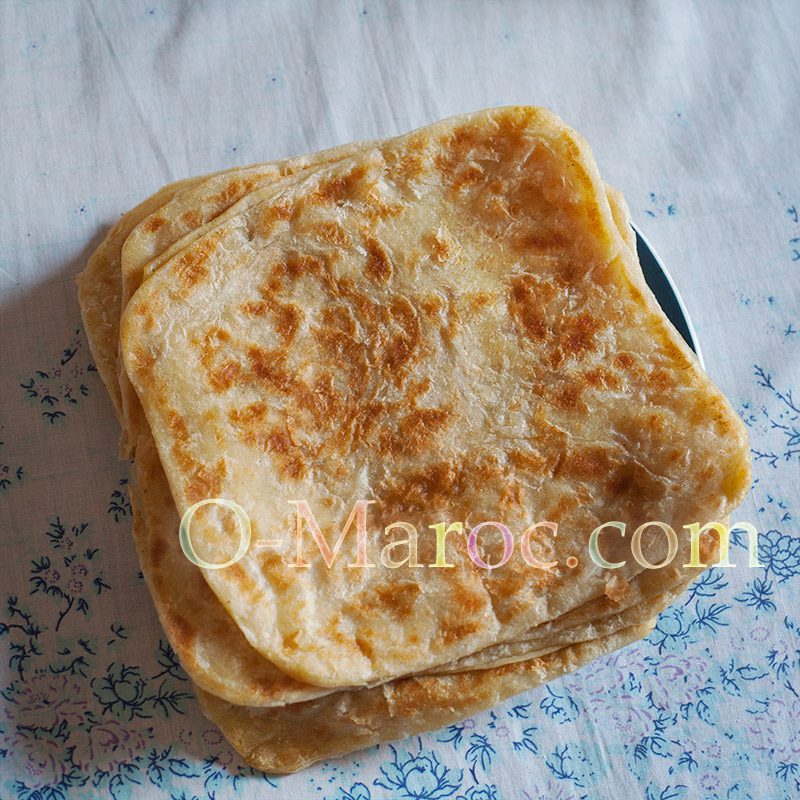
You can also have Amlou, a pastry made with almonds and arfan oil.
On the other hand, “omelettes” is a misnomer: it’s more a sort of fried egg, the yolk of which has been crushed with a fork so that it’s perfectly cooked!
It is cooked in oil for a long time.
Fish is fried and rarely grilled (you can find it everywhere, inland towns are often served at least once a week, and on the coast it’s a pleasure to eat at the port, as in Agadir), grilled meats, often after being marinated the night before in spices and white vinegar.
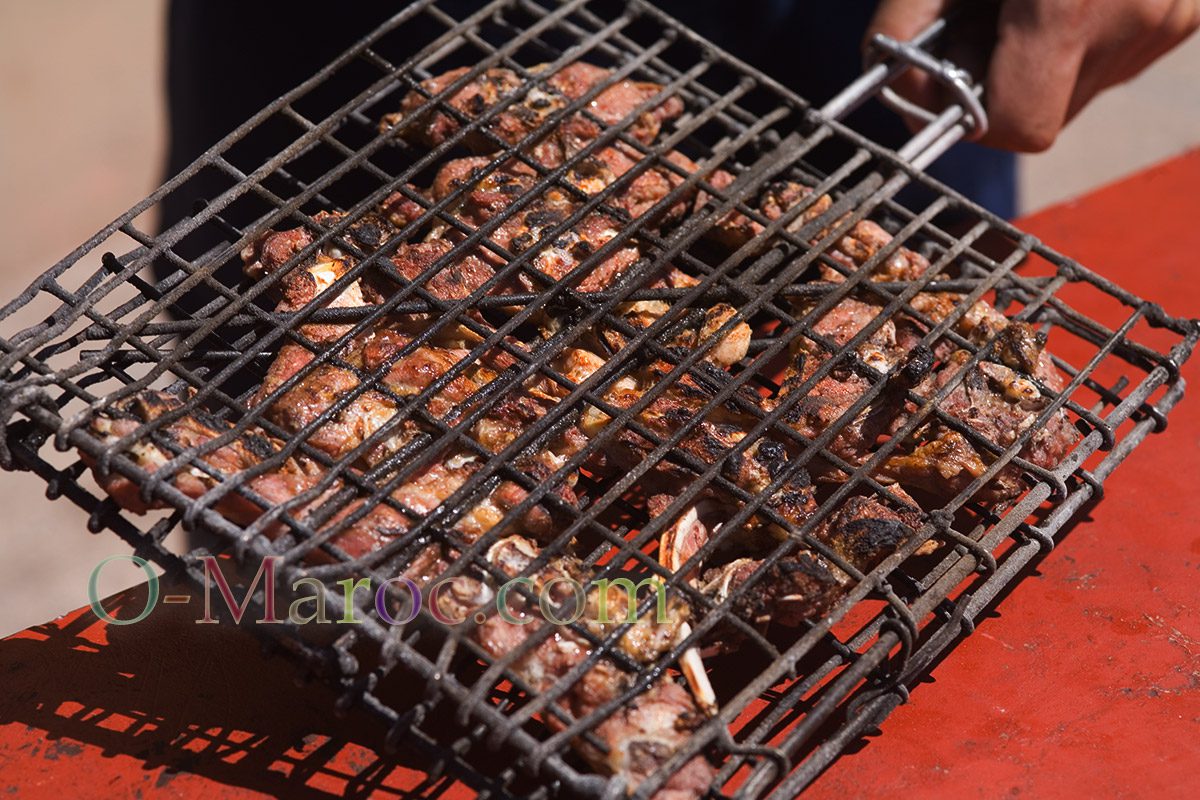
The meat or fish tagines are cooked for a long time, with the various ingredients added as they are added. The concept of rare meat does not exist, both for reasons of hygiene and to comply with the Islamic ‘halal’ method of slaughter.
Water is increasingly safe to drink.
In the big cities, Casablanca, Rabat, Marrakesh, it is drinkable.
It can have a bad taste, either because of chlorine or because it has passed through gemstones in the mountains.
You can brush your teeth with it, but it’s nicer to drink bottled mineral water, which you can find in all the little shops. It costs between 5 and 10 dirhams a litre and a half, depending on whether you buy it from a retailer or a restaurant. Drink mineral water (Sidi Ali, Sidi Harazem, etc.) rather than spring water, as the latter doesn’t taste as good.
There are many springs in Morocco, generally water filtered by the mountains. We never had any problems drinking it, maybe we were lucky. In any case, if you want to try your luck, drink directly from the spring, and only if it has been set up in such a way that it cannot be polluted by animals.
Moroccans started drinking mineral water fairly recently. But in the ‘boondocks’, they often prefer soft drinks, especially Coke and Pom’s, a fizzy, frighteningly sweet apple juice.
Tea, “Berber whisky” and kahwa, coffee
Green tea was only introduced to North Africa around 1830. It is the local equivalent of our petit noir. It is drunk flavoured with mint, or wormwood (cheba) in winter, or rosemary. Even plain, it is delicious. It is always served very hot and very sweet.
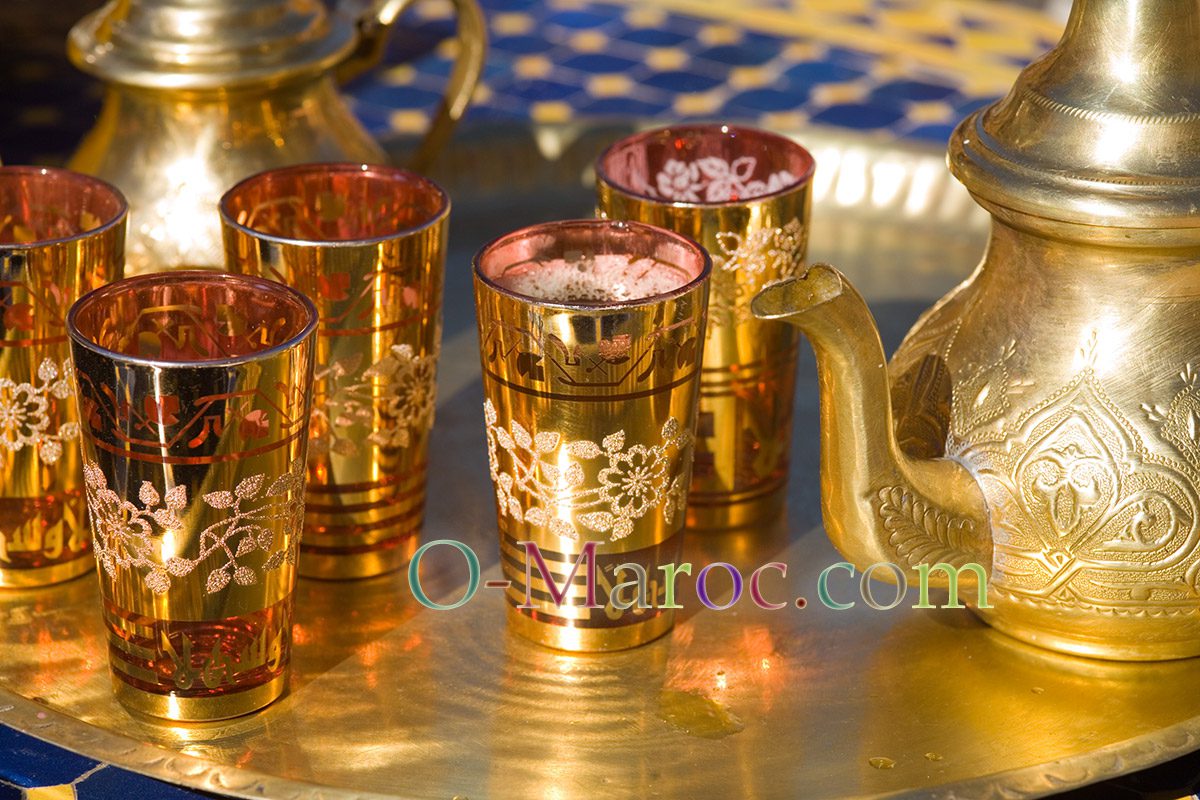
Coffee, whose name comes from the Arabic, qahwa ( قهوة ), is also drunk very sweet, or with milk (nouss-nouss, half and half), no doubt to hide the strong Robusta taste. There are two perfectly decent Moroccan coffee brands, Dubois and Carrion. But all the Italians I know here complain that it’s totally impossible to find a good espresso. There’s a saga to write about!
A symphony of spices
Spices and herbs are everywhere: cumin, turmeric, coriander, ginger, safran, various chillies, cardamom, cinnamon, parsley….
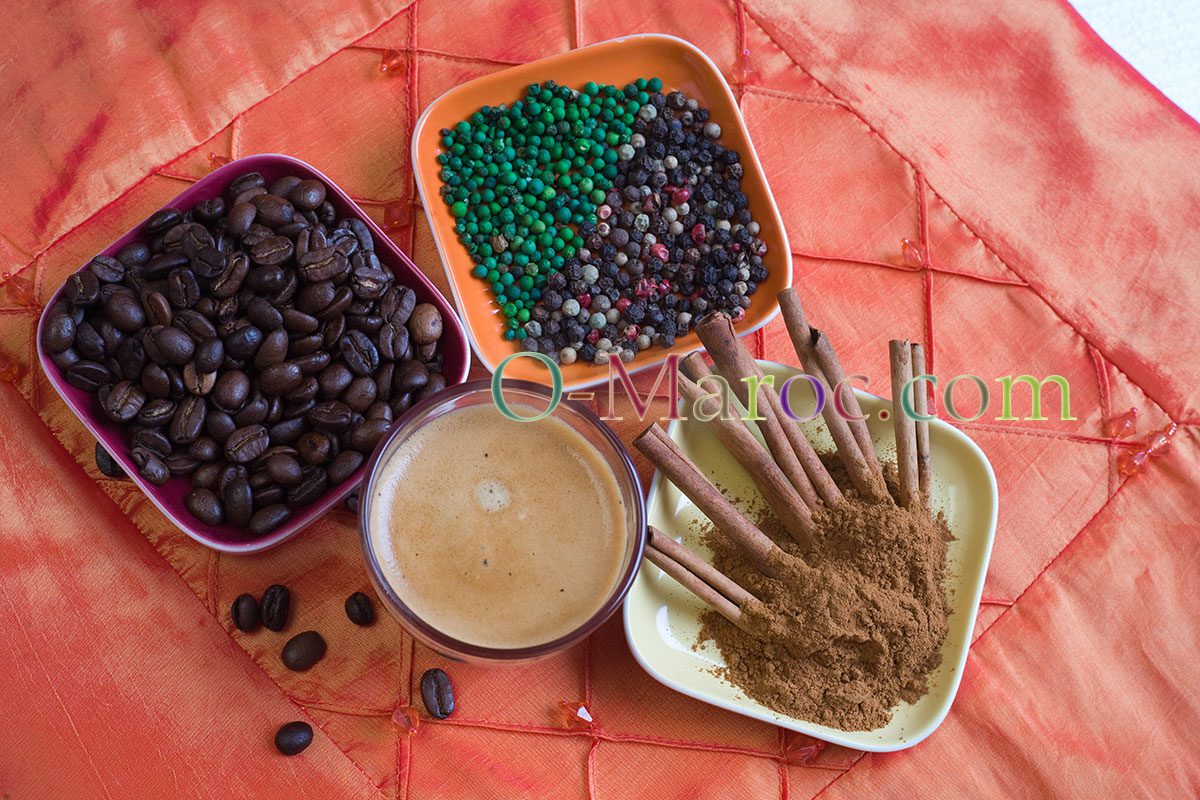
If you buy your spices at the market, you can ask them to make ras-el-hanout (the chef’s blend) for you, specifying which dish it’s for. For saffron, beware of counterfeits!
Dishes not to be missed.
Tagines, of course, chicken tagines with preserved lemon, beef tagines, fish tagines, the tagine is a cooking method, like the casserole in our country, and its contents are varied.
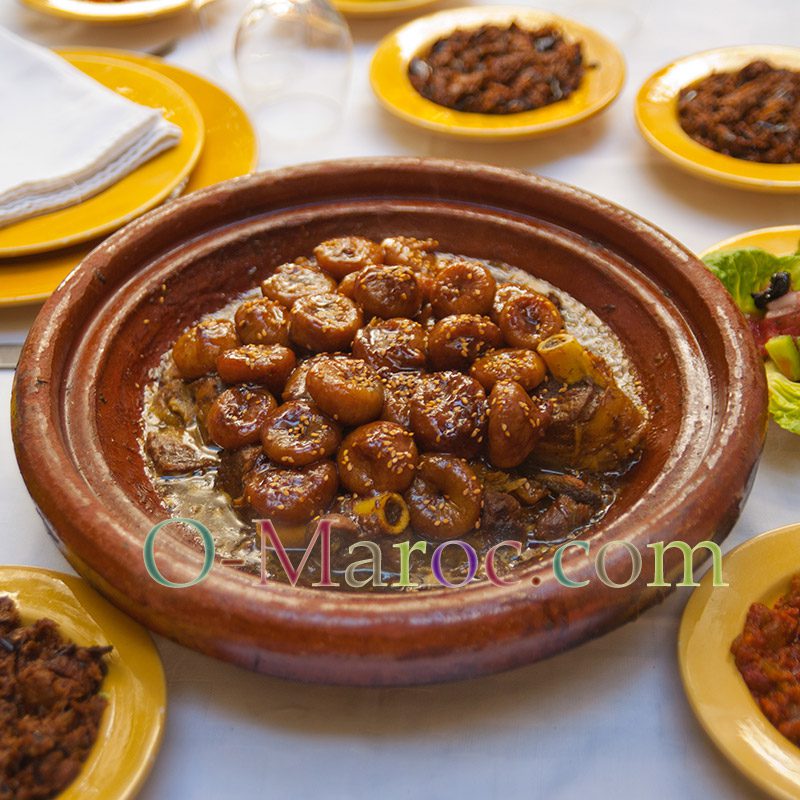
Couscous and sfa (semolina cooked with raisins, sprinkled with cinnamon and drizzled with milk), pigeon pastilla (minced meat mixed with eggs, almonds and spices, wrapped in brick pastry), gazelle horns, briwat, msamem (a kind of thick pancake) – even the simplest Moroccan dishes are delicious.
You can also try rayit, a kind of thickened milk eaten with a teaspoon, flavoured with fruit or simply sugar.
Bread
Moroccans have several types of bread, starting with Tafarnout ⵜⴰⴼⴰⵔⵏⵓⵜ , a Berber bread (as the name suggests), a very large, fairly flat wafer baked in the traditional oven (Afarnou).
The other Moroccan bread is the galette found everywhere, often made of barley or semolina. It is used as a measure for the meal when you eat using the bread as a place setting: you have finished eating when you have finished your galette.
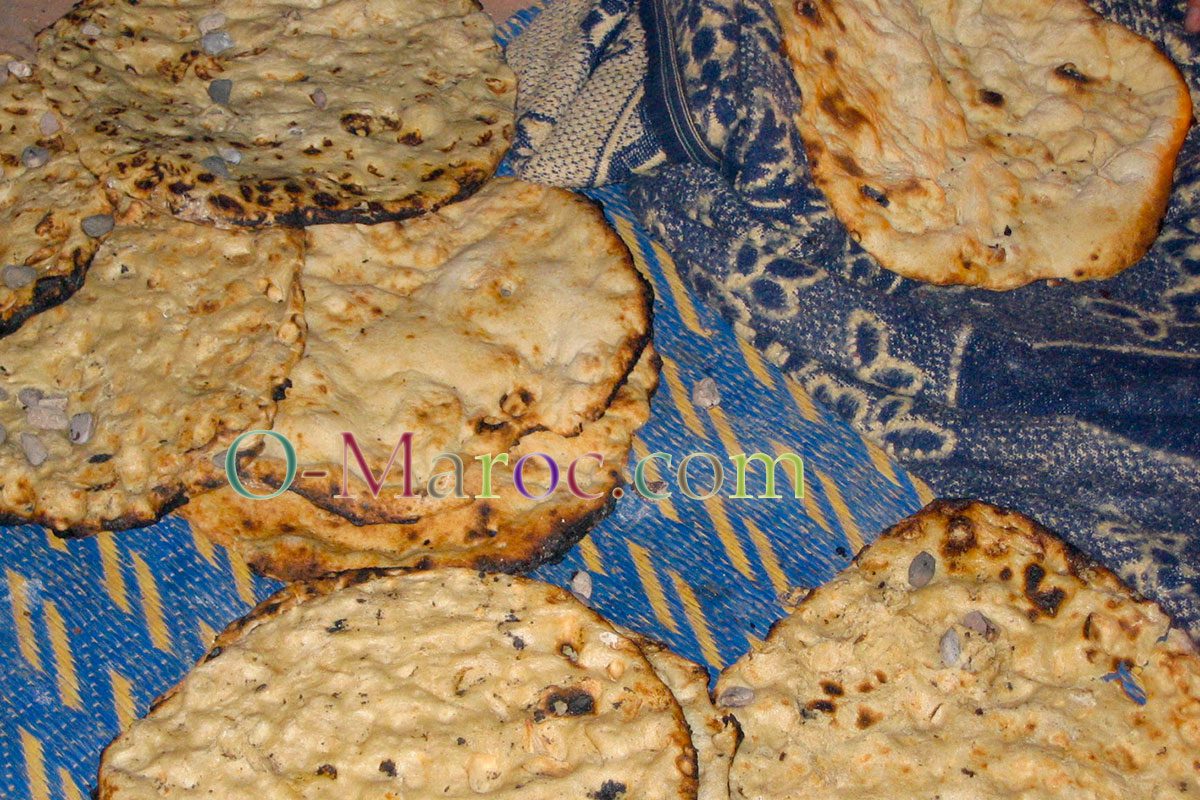
French bread is generally acceptable, even in chains like Paul’s, but you can sometimes find a local bakery that makes a good baguette. Other foreign breads are non-existent (I’ve sometimes seen German black bread, but I think it was a mistake by the importer).
Bread in Morocco has a whole history, that of the from durum wheat to common wheat with colonisation, of a profound change in eating habits…
Alcohol and charcuterie
Although forbidden to Muslims, they are available to foreigners, whether they are just passing through or live locally.
It is possible to find alcohol in certain supermarkets or specialist shops, but it is expensive. Dishes that are cooked with a little alcohol in Europe, such as tiramisu, are, with a few exceptions, without any alcohol at all, which will change the taste.
Similarly, there are many cold meats made from turkey. Not always very good…
Pork-based charcuterie can be found in a few supermarkets in the larger towns, but here too it is very expensive… and of average quality.
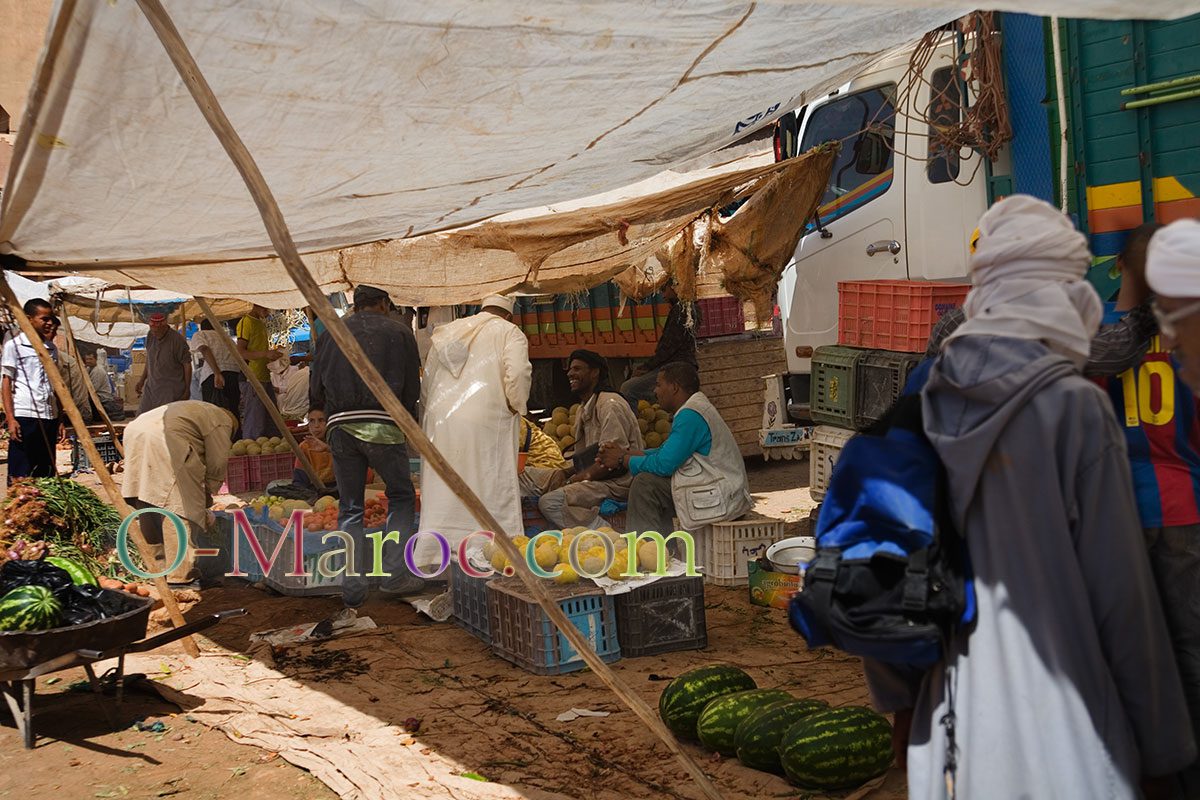
Do your own shopping
Strolling around the souk and doing your shopping can be a real pleasure.
All the shopkeepers will call you, attract you, and you have to be able to walk briskly when you don’t want to stop.
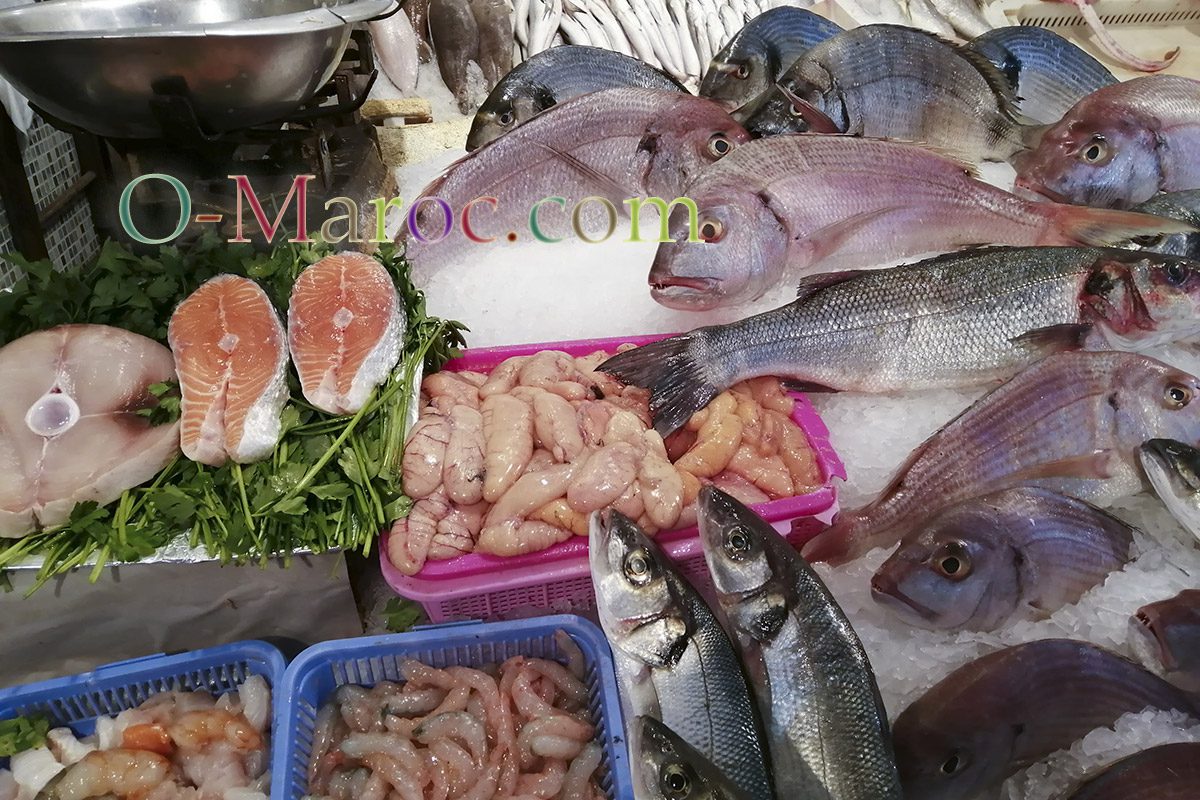
Certain habits can also be disconcerting, such as the habit that customers have of feeling the pieces of meat themselves to choose the best (don’t forget that meat always cooks for a long time!). But you’ll get your fill of smells and flavours. Moroccan markets are much closer to the rhythm of the seasons than ours, so you won’t find everything all the time.
But that’s where you’ll find spices in abundance, and pastries sold for a few dirhams….
Eating with Moroccans.
If you are invited to eat with a traditional Moroccan family, you will no doubt be served in the large communal dish, where everyone helps themselves to a small piece of bread with their right hand. European-style cutlery is also widely used, depending on the dish. But to eat couscous, the communal dish is dogmatic!
If you can’t manage it, don’t hesitate to ask for help – a plate and fork, or a spoon, will appear!
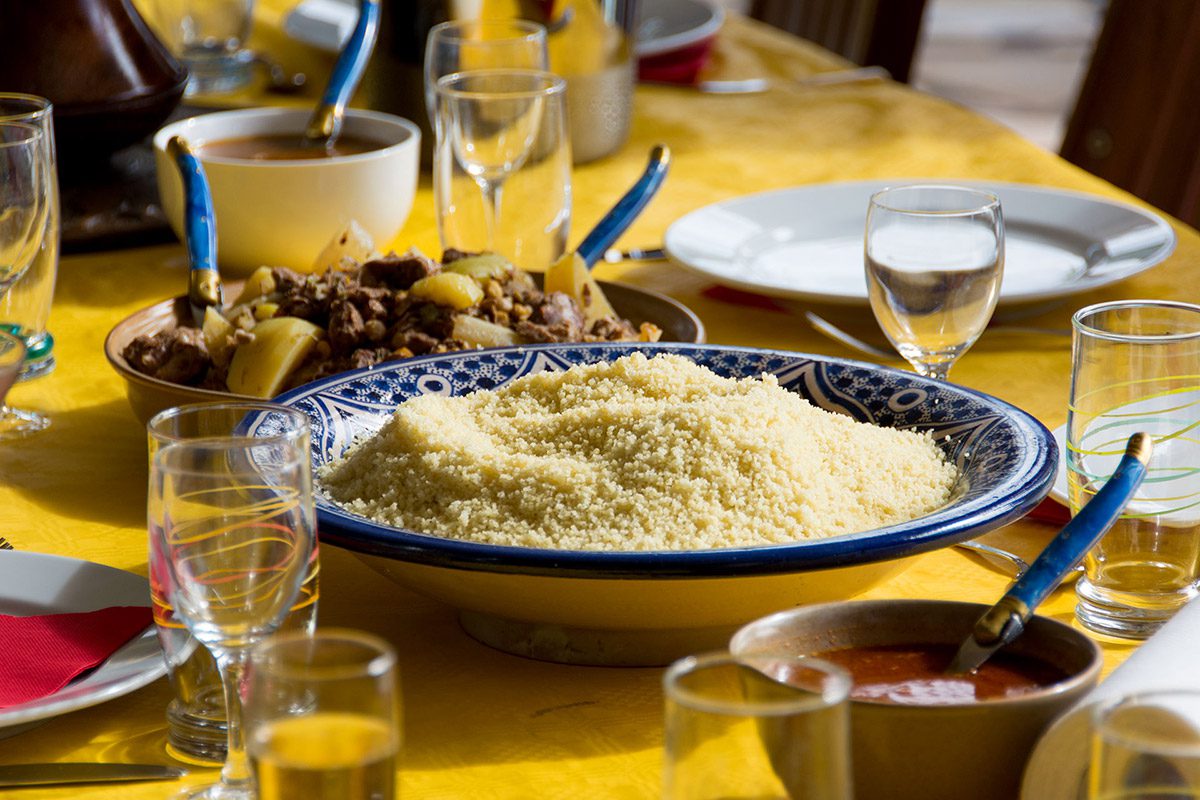
If you want to eat Moroccan-style, it’s impolite to take a morsel from anywhere other than in front of you, and vegetables are finished before meat. The lady of the house may share the pieces, and will then reserve the best for you. Above all, you must eat and drink with your right hand only. You will be served soft drinks. And you will be encouraged to help yourself and eat copiously.
Restaurants, from traditional to international
When I arrived in Morocco, there were hardly any non-Moroccan restaurants outside the major cities and/or upmarket hotels.
The arrival of vegetarianism
It was also extremely difficult, if not impossible, to eat vegetarian in Morocco, the notion of organic was improbable.
I’ll never forget this scene in a hotel restaurant in the south. A group of American tourists were having lunch and one of them had asked the guide to order a vegetarian lunch.
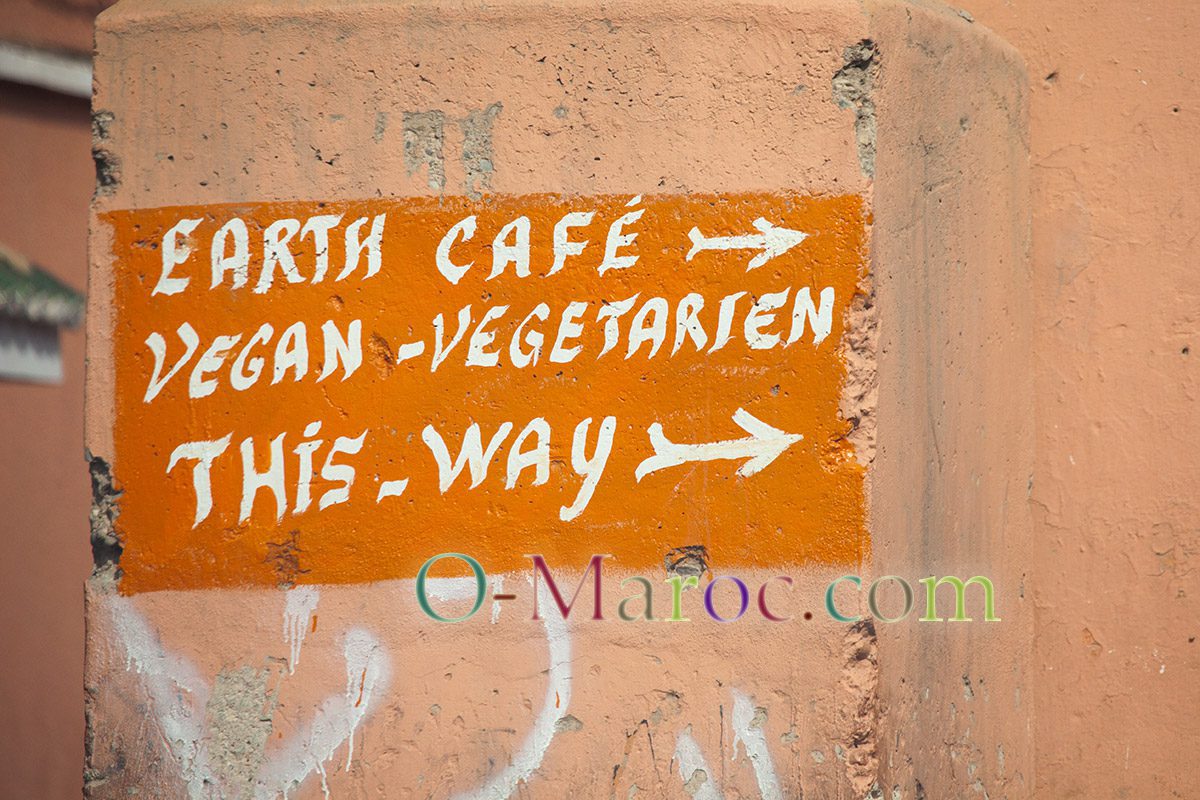
The scandal when she realised that the chef had simply removed the meat from the dish cooked in a large pot before serving it to her! And the incomprehension of the cook, who said “well, it’s meatless”!
Nowadays, it’s easy to eat vegetarian in big cities. Restaurants on tourist routes can serve you genuinely vegetarian dishes. Vegan food, on the other hand, is much more difficult.
International cuisine
There have always been French restaurants in Morocco, as a result of colonisation, and in some towns (Agadir, Tangier, Casablanca) you can find almost the entire range of world cuisine, especially from countries that are not too cold… these restaurants have adapted to serve consumers who refuse to eat pork, or offer a variety of dishes to suit everyone.
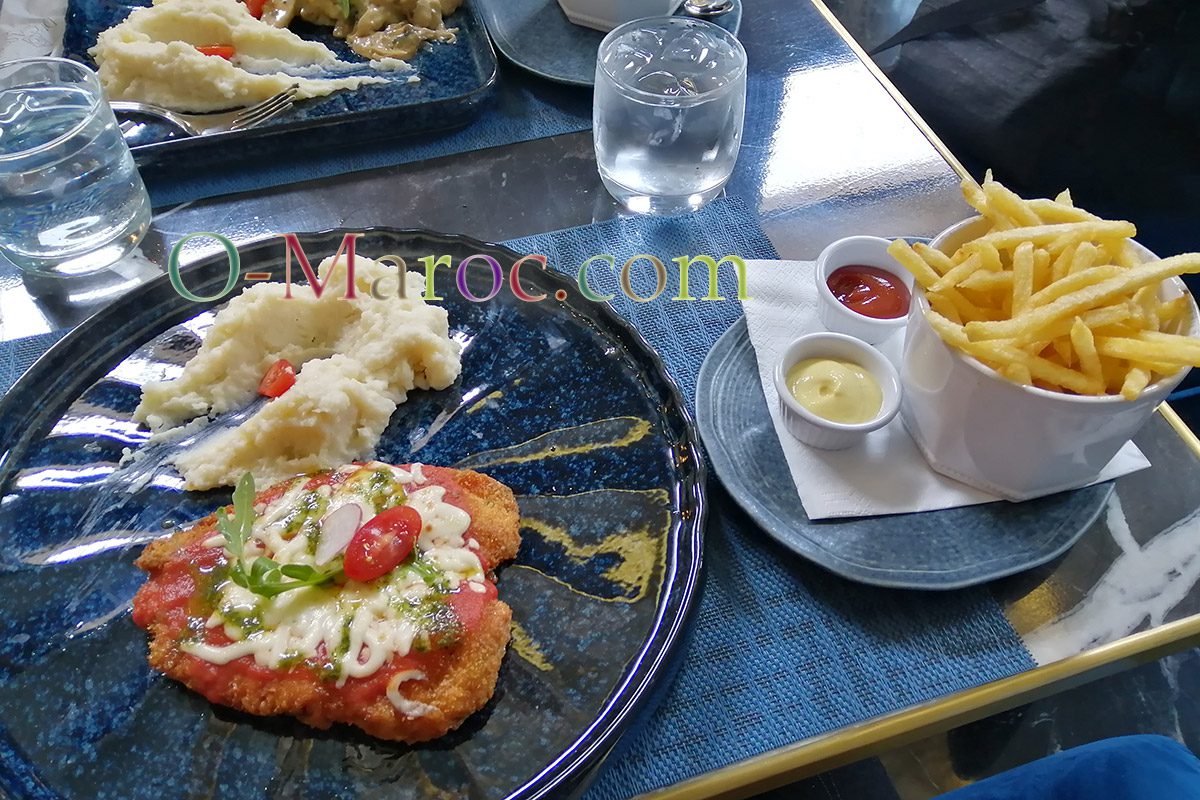
Casablanca is overrun by “Asian” restaurants, all cloned with the same menus… I don’t much like them. There are also some real Asian restaurants, some Chinese and some Indian restaurants.
Eating cheaply or on the go
In snack bars, you can now find tacos (from Lyon, it seems…), served with chips in the taco, pasticcios that are very nourishing but that’s their only quality, paninis or sandwiches made with ‘kosher’ charcuterie, in short a whole range of cheap ‘things’ but much less good than traditional Moroccan dishes. Only the shawarmas stand out.
The record for the cheapest dish remains the sardine sandwich!
Foreign fast foods in Morocco
Fast-food outlets have sprung up in Morocco, and the number of brands has multiplied (when I first arrived, I think we only knew McDonalds). Foreign brand franchises don’t fit into the ‘cheap’ category, quite the contrary.
Curiously, Morocco does not appear in the list of countries for which the BigMac Index is calculated each year. (It only includes Egypt and South Africa). But calculating it is easy:
a Big Mac costs Morocco 47 dirhams, or $4.66, which puts Morocco between the Czech Republic and Brazil. An employee on the minimum wage will therefore have to work 2.88 hours to earn his Burger. In Great Britan, it only takes 56 minutes.
 A typo or syntax error? You can select the text and hit Ctrl+Enter to send us a message. Thank you! If this post interested you, maybe you can also leave a comment. We'd love to exchange with you !
A typo or syntax error? You can select the text and hit Ctrl+Enter to send us a message. Thank you! If this post interested you, maybe you can also leave a comment. We'd love to exchange with you !

